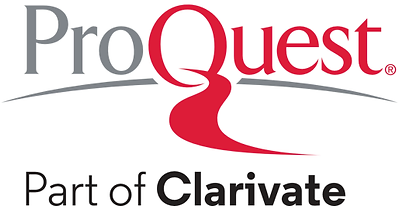Enhancing X-ray Therapy: A Monte Carlo Study of Bismuth Sulfide Nanomaterials
| Authors | L. Kahia Aoul1, A.S.A. Dib2, S. Chiali1, A. Djelloul3 |
| Affiliations |
1Université Oran1 Ahmed Ben Bella, Oran, Algeria 2Université des Sciences et de la Technologie d’Oran Mohamed Boudiaf, USTO-MB, BP 1505 EL M’naouer, 31000 Oran, Algeria 3Centre de Recherche en Technologie des Semi-Conducteurs pour l’Energétique ‘CRTSE’, 02 Bd Frantz Fanon, BP 140, 7 Merveilles, Alger, Algérie |
| Е-mail | ahiaoual@outlook.com |
| Issue | Volume 17, Year 2025, Number 4 |
| Dates | Received 18 April 2025; revised manuscript received 22 August 2025; published online 29 August 2025 |
| Citation | L. Kahia Aoul, A.S.A. Dib, et al., J. Nano- Electron. Phys. 17 No 4, 04032 (2025) |
| DOI | https://doi.org/10.21272/jnep.17(4).04032 |
| PACS Number(s) | 07.85.Qe, 43.58.Ta, 71, 78.40.Ri |
| Keywords | Radiation dose, Monte Carlo code, Nanomaterials (NMs), Tumor. |
| Annotation |
This study performs a numerical simulation of brain radiation therapy with a deep tumour at its centre using the Monte Carlo simulation program Geant4. The primary goal is to analyze the effect of nanomaterials (NMs) injected into the tumour on the dose and amount of radiation absorbed by the tumour. We built a spherical tumour measuring 1.5 cm in diameter in the middle of an adult human head while considering their chemical compositions and proportions. We are interested in studying the effects of adding bionanomaterials such as Gold nanoparticles (AuNP), hafnium oxide (HfO2), cerium oxide (CeO2), tantalum oxide (Ta2O5) and bismuth sulfur (Bi2S3) to the amount absorbed during an external exposure at a wavelength of energy ranging from 10 keV to 200 keV. The findings demonstrate that an absorbable dose improvement of 5.5 is obtained with a low concentration of 2% Bi2S3 nanoparticles inside the tumour, nearly four times with CeO2 nanoparticles and slightly more than three times with AuNPs. According to our results, Bi2S3 and CeO2 provide more enhancement in Radiotherapy than the most well-known materials in the literature, such as AuNPs. |
|
List of References |
Other articles from this number
1) Modeling the Breakdown of the p-n Junction Based on GaAs Using Molecular Dynamics Method [04001-1-04001-6]2) Role of Grain Boundary Strengthening for Increasing the Microhardness of Aluminum Alloys Irradiated by High-Current Pulsed Electron Beam [04002-1-04002-6]
3) Theoretical and Experimental Study of a Human Inner Ear Implant with an Ultrasonic Communication Line [04003-1-04003-8]
4) Morphological and Optical Properties of Silicon Micro-nanostructures Induced by DC Corona Discharge at Atmospheric Pressure [04004-1-04004-7]
5) Oblique Incidence E-polarized Photons on Infinite Periodic Grating of Metal Strips [04005-1-04005-5]
6) Microwave Photomodulation Method for Noninvasive Analysis of Doping Profiles in Inhomogeneous Semiconductor Structures [04006-1-04006-6]
7) On Increasing the Sensitivity of a Resonator Probe with Axial Symmetry in Local Microwave Diagnostics of Nanoscale Objects [04007-1-04007-7]
8) Physical Electronics of Piezoceramic Transducer Systems and their Dependence on the Character of the Electrical Excitation of the Systems [04008-1-04008-5]
9) Improvement in the Gas Detection Capacity of ZnO-based Sensor: Impact of Static Potential [04009-1-04009-7]
10) Near-surface Superconductivity in Topological GaSb and Bi2Se3 Whiskers [04010-1-04010-7]
11) Forecasting Electricity Consumption Using ARIMA-LSTM Model [04011-1-04011-7]
12) The Impact of Electromagnetic and Optical Radiation on Physical and Biological Systems [04012-1-04012-5]
13) Fabrication of Bio-Polymer Nanocomposite EMI Shields Based on Sugarcane Bagasse and PVA/PANI/MWCNT, and Evaluation of the Shielding Effectiveness in Relation to the Various Compositions [04013-1-04013-6]
14) Nano-Enhanced IoT Sensors and Hybrid Scheduling Algorithms for Smart Agriculture: A Multi-Layered Framework Towards Sustainability [04014-1-04014-6]
15) Finite-time Stabilization of Delayed Uncertain Systems Using a Novel Integral Inequality Approach [04015-1-04015-6]
16) Inflationary Cosmological Models Using Bianchi Types II-IX: A Mathematical Approach [04016-1-04016-5]
17) Solvothermal Synthesis and Comprehensive Characterization of High-Quality Graphene Oxide [04017-1-04017-5]
18) Groove-Slotted Textile Antenna for Enhanced Wearable Healthcare Applications [04018-1-04018-5]
19) Highly-Isolated Compact Quad-Lobed UWB MIMO Antenna with Hexagonal Slot for Enhanced 5G and Industrial IoT Applications [04019-1-04019-5]
20) Compact Broadband Microstrip Patch Antenna for 5G Communication Applications [04020-1-04020-5]
21) Performance Enhancement of Microstrip Circular Ring Dual-Band Patch Antenna with Minimum Reflection for Effective Wireless Communication Applications [04021-1-04021-5]
22) Efficient Miniaturized Patch Antenna Design for Short-Range Wireless Communications [04022-1-04022-5]
23) A Y-Shaped Patches Massive MIMO Antenna for Performance Measures in 6G Application [04023-1-04023-5]
24) Hybrid Shaped Miniaturized Ultra-Wideband Microstrip Patch Antenna for Various 5G and Remote Sensing Application [04024-1-04024-5]
25) Improving Performance Using 2 x 2 Single Element Massive MIMO Antenna in 6G Devices [04025-1-04025-5]
26) Flexible Material Based Broadband Antenna for Both C-and X-band Applications [04026-1-04026-5]
27) Intelligent Approach for Analyzing Semiconductor Band Gaps in Nanomaterial Systems [04027-1-04027-5]
28) Optimization of Defect Detection in Atomic Materials Using Graphene Layer [04028-1-04028-5]
29) Approach for Predicting Filtration Efficiency in Nanocomposite Membranes Using 2D Materials [04029-1-04029-6]
30) Optimization Technique for Parameter Estimation in Solar Photovoltaic Systems Using Nanomaterials [04030-1-04030-6]
31) Electrophysical Properties of Nanoscale Functional Materials Based on Fe and Ge for Sensor Electronic [04031-1-04031-4]
32) Influence of Shielding Potential on the Formation Process of Nanostructured Nitride Coatings of the MoN/CrN System [04033-1-04033-6]
33) Nanomodified Concrete for Harsh Environments: Enhancing Durability Using Nano-Admixtures and Cementitious Nanotechnology [04034-1-04034-5]
34) Design and Implementation of Charge Plasma Based Dopingless MBCFET Using Ultrathin Ge for Low Power Application [04035-1-04035-5]
35) Gadolinium Nanoparticles: A Promising Agent for Enhancing Radiotherapy at Low Concentrations [04036-1-04036-6]
36) Microwave Absorption Properties of a Composite Material Based on Polyvinyl Chloride and Yttrium Iron Garnet [04037-1-04037-7]
37) Numerical Modeling of the Cracking Process in a Hip Joint Endoprosthesis [04038-1-04038-5]
38) Personalities. V.B. Loboda [04039-1-04039-2]






